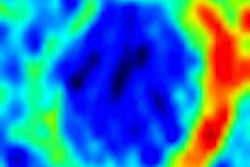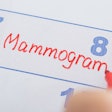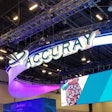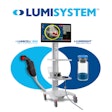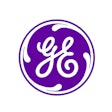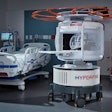In the weeks following the September 11 terrorist attacks on the World Trade Center and the Pentagon, AuntMinnie.com spoke with radiologists at hospitals in New York City and Washington, DC, about the role radiology played in caring for the victims. In a two-part series, we’d like to share with you how five facilities handled the crisis, the lessons they learned, and how their experiences might shape future responses.
When radiology professionals at local hospitals around the World Trade Center and the Pentagon got word of the September 11 terror attacks, they prepared for the worst, unsure of how many patients would be coming through their doors. Perhaps the most tragic aspect of their stories is that the PACS networks, disaster protocols, and emergency rooms were not severely strained, since most of the victims did not survive.
As they responded to news of the attacks, all of the hospitals in the affected areas took a series of precautionary measures, such as canceling elective procedures, clearing outpatient clinics, and moving stabilized patients out of intensive care units. The most common injuries they treated were smoke inhalation and broken bones. Concerned that there would be a glut of unidentifiable patients that would be difficult to track in their PACS networks, some facilities created hard copies of images as a backup.
In the following accounts, radiology professionals who were on the front lines discuss the events of September 11, 2001.
New York Downtown Hospital, New York City
New York Downtown Hospital is the closest facility to the World Trade Center; the hospital treated or sheltered nearly 1,000 victims after the bombings and the collapse of the towers. It was also the facility most deeply challenged by factors such as power and phone service loss.
Although New York Downtown Hospital is not a trauma center, it treated some severe trauma cases due to its proximity to the Trade Center towers. But most of the patients had only minor injuries, many of which did not require x-rays.
The facility lost power in the late afternoon of September 11, when Tower Seven of the World Trade Center fell. Without power, New York Downtown Hospital’s HIS network slowed and it lost the use of its CT scanner, which was not connected to its emergency generator.
The next day, the radiology department received a portable CT unit with its own generator on loan; in the meantime, radiologists used x-ray units to image patients. The surrounding area and the hospital also intermittently lost phone service for a week after the attacks. To deal with this problem, the hospital’s leadership established a command center and held meetings for staff twice daily.
Chief of radiology Dr. Hyman Shwartzberg was on grand rounds when the first plane hit.
"It was such an overwhelming, monumental thing. It took us all a few minutes to absorb what was happening," he said. "Initially, none of us knew the extent of what had happened, but as we watched out the window the immensity of the attack started to dawn on all of us. We knew we’d better get to our stations, because this was a huge emergency."
Bellevue Hospital Center, New York City
Dr. Philip Jeffery, the director of emergency radiology at Bellevue, had just started reading films of cases from the night before when he got news of the first plane crash into the World Trade Center towers. Bellevue’s trauma surgeons immediately requested more radiologists on site to read films, and the hospital moved an additional PACS workstation to the trauma center.
Three ultrasound machines were also brought to the emergency room so technologists could perform focused abdominal sonography in trauma (FAST) studies of the abdomen. Patients who needed CT scans were transported to radiology on the hospital’s third floor.
Bellevue ended up treating about 30 trauma victims from the attacks on the day of the disaster: more than typical, but far fewer than expected. For several days after the attacks, rescue workers trickled into Bellevue with minor trauma injuries.
Many hospitals reported that the attacks sparked an outpouring of assistance from staff members, some of whom came in to help on their day off. While the extra help was appreciated, it also raised questions about handling future emergencies.
"At one point, it seemed the entire staff of the hospital came to the emergency room to help," Jeffery said. "And visitors to New York who were also physicians and nurses showed up. It was wonderful, but also difficult to deal with. We realized later that in the event of further attacks, especially biochemical ones, all those key people could have been at risk of being exposed."
Beth Israel Medical Center, New York City
Located two miles from ground zero, Beth Israel cared for about 300 victims in the first three hours after the assaults. As soon as it was notified of the attacks, Beth Israel ordered all its staff to remain at the hospital and made arrangements to house them. This was because administrators were unclear whether key personnel would be able to travel to and from the facility if attacks continued. The hospital also ended up opening its supply of face-masks to people on the street.
Radiology department chair Dr. Michael Abiri was at a conference in San Francisco at the time of the attacks, and remained stranded on the West Coast until the following Saturday. In the meantime, associate chair Dr. Lee Sider managed the department.
"We went on emergency alert and cleared the entire hospital, all the outpatients, with the idea that we were going to get a lot of (trauma) cases, but unfortunately the patient volume we expected didn’t materialize," Sider said. "We stayed on alert for a week, hoping that as rescue crews went deeper into the rubble they would find survivors. But it became increasingly clear that there wouldn’t be [any], and that was devastating, because we so much wanted to help."
Sider felt it important to update his staff as much as possible throughout the crisis, and held meetings twice a day so employees could share information and concerns. He formed teams of residents to act as patient transporters to imaging stations, and made sure each technologist had a resident partner to help position patients. His focus was on making the imaging process as efficient as possible, since it was initially unclear how many victims would be arriving.
"In a time of crisis like this, you do everything you can," Sider said. "There’s no job you’re not willing to do, no place you’re not willing to go. It’s a time when you drop the caste system of doctors, technologists, nurses."
Virginia Hospital Center at Arlington, Arlington, VA
When news of the attack on the Pentagon arrived at Virginia Hospital Center at Arlington, radiology chief Dr. Russell McWey instituted a closely managed system in which teams of two to three technologists went to the emergency room to begin performing portable, chest, and extremity scans. They then brought the films to radiologists for immediate reading before returning to the ER.
Since no one knew how many patients would need to be treated, McWey wanted to ensure that films wouldn’t get confused among potentially unknown patients. And in order to keep the emergency room doctors from having to walk back and forth between the ER and radiology, technologists printed scans that had also been loaded into the hospital’s PACS network and carried them to ER doctors. The same protocol was used for CT scans.
Like many other facilities, Virginia Hospital benefited from the generosity of off-duty staff -- and in some cases former staff -- that returned to help. Because there were plenty of doctors and technologists, the system worked well, according to McWey.
"We saw 30 or 40 patients, which if we had known, we would have been able to handle [normally]," McWey said. "But since we had extra staff, it was possible to put this alternative protocol in place so that patient images wouldn’t get confused or lost."
By Kate Madden Yee
AuntMinnie.com contributing writer
November 1, 2001
Tomorrow: Lessons learned from September 11, including how digital image management can help imaging facilities prepare for disasters.
Related Reading
Chest CT pegs inhalation anthrax at Virginia facility, October 30, 2001
Imaging technology answers an urgent call for security, October 26, 2001
Copyright © 2001 AuntMinnie.com
|





